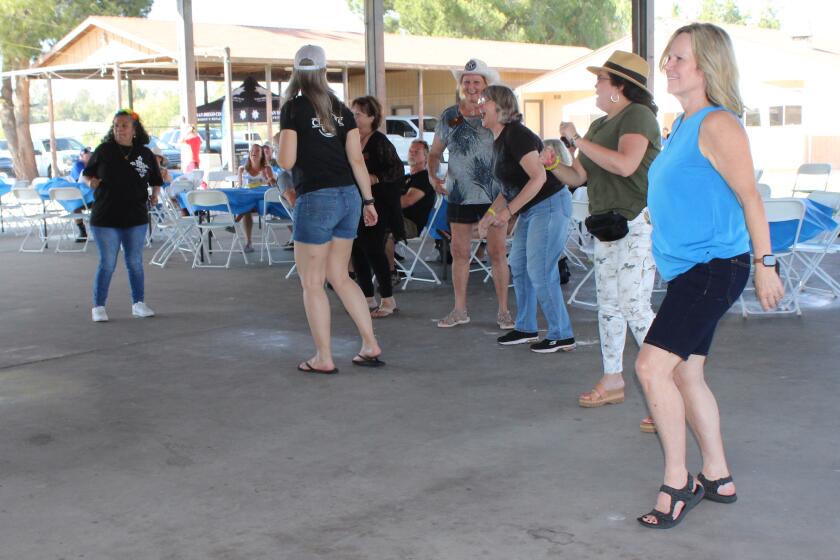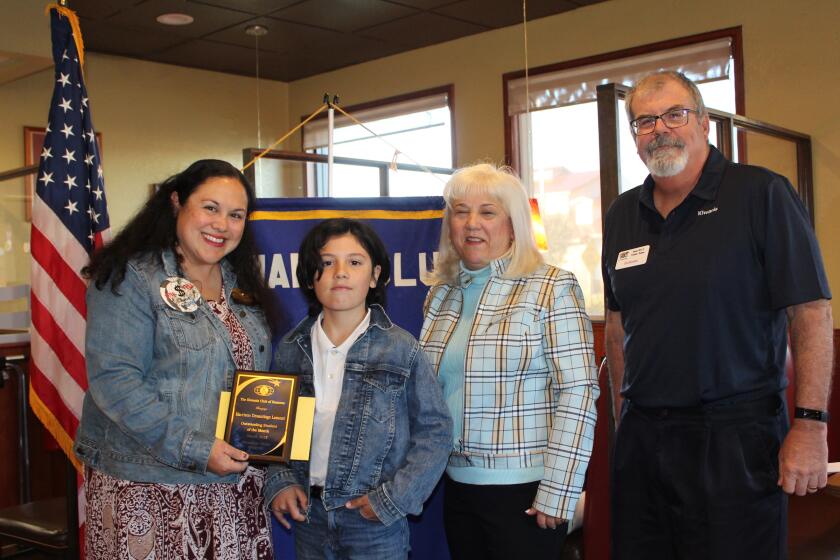Teacher raises the agricultural bar in community
By Regina Elling
Usually, teachers teach kids; oftentimes, it’s the youth who give the instructors the real lessons, and sometimes — a very few sometimes — a special teacher shows a community what learning is really all about. For Vanessa Wright, the newest agriculture teacher at Ramona High and Montecito High, learning, teaching, and sharing are all wrapped up in one talented, energetic and humble package.
Young and newly married, Wright (formerly Tobin) has a schedule that might daunt even a much older and more experienced educator. She’s teaching agriculture biology, agriculture economy, agriculture science, and veterinary science at Ramona High School. She is also the Future Farmers of America (FFA) adviser there.
Meanwhile, she is teaching landscape design and ornamental horticulture at Montecito High School. There, she is responsible for the school’s garden and landscaping, in addition to her teaching duties.
If it sounds like a big commitment, it is, especially realizing she lives in Irvine, and drives an hour and a half each way just to teach here.
This is Wright’s second year teaching in Ramona. A recent graduate herself, her bachelor’s degree is in agricultural science from California State Polytechnic University, Pomona (Cal Poly Pomona), with her teaching credential in agricultural education from Cal Poly San Luis Obispo.
“As a teacher, I was going to be paid double at another job I was offered, but I chose to teach in Ramona,” she said. “There is just something about this town I love.”
From the way the students, their parents and her fellow teachers have embraced her, it is obvious the feeling is mutual.
Breanna Andrews, one of Wright’s former students and an FFA member, said, “I think she is much better than our past teachers. She teaches us all in our own special way. She’s really awesome.”
Other students and their parents express similar praise.
“She has a lot of the difficult kids,” said one adult. “And she’s really made a difference to them.”
“The students and I are all very open and honest with each other,” Wright said. “I’ve gotten huge support from the teachers, the administration, and the parents. For example, at one of our events, normally about 10 families show up. This year, there were more than 100 individuals. It’s really been amazing.”
Equally amazing is her ability to attract students to her agriculture classes. Although Ramona may appear to be an
obviously agriculturally based community, it hasn’t been so obvious by looking at student enrollment in the ag classes. At Ramona High School, there were originally about 35 students combined in all the classes.
Wright started teaching last year, and this year there nearly 150 students signed up for her classes.
Knowing that they have a teacher who appreciates their learning experiences is probably a big draw for the youth.
“It’s nice to have the students with experience in the classes,” said Wright. “They’ve been able to help bridge the gap between 4-H and FFA, and share their knowledge.”
The larger numbers of students, however, make the program’s shortfalls even more obvious. At Ramona High, Wright said, the entire school has been hit hard with budget cuts.
“We really need help with everything,” she said. “The grounds have been let go, but we have no tools. The barns have major water damage. We have a greenhouse, but we can’t use it—we have no soil, no pots, no tools, nothing.”
Wright hasn’t let the lack of funding hinder her dreams for RHS.
“Over the next five years, I would love to get our farm and barn updated,” she said. “I’d love to grow our horticultural program. There used to be a vineyard and an orchard on the grounds, and I’d love to get those going again. And I’d love to have even more stuff on the farm.”
Meanwhile, she has similar hopes for the future of agriculture at Montecito High, where nearly 40 students are enrolled in her classes.
“Just keeping up what Tom Serio, the former teacher, now retired, did, is a huge task,” she said. “I also want to keep the number of students up, and hope to keep the vegetable garden and the landscaping looking just as good as he kept them.”
Humble but hopeful, Wright plans to continue to spread her love of teaching and agriculture across the Ramona student landscape. It may take a village to raise a child, but sometimes it takes a teacher to raise a reminder in the village — in this case, a reminder of the love of community and agriculture that represents the very heart of Ramona.




